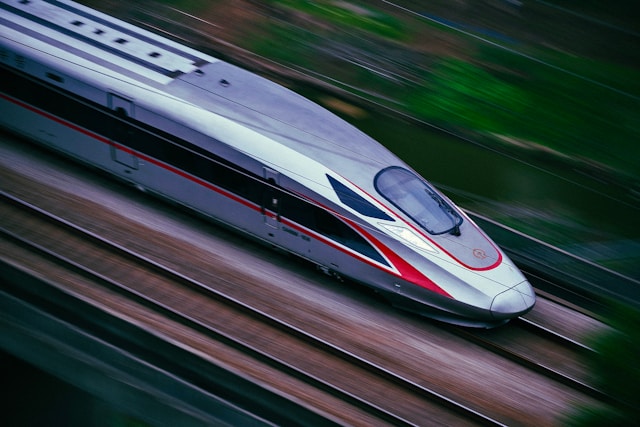High-speed rail link to enhance economic ties and transportation efficiency between Kuwait and Saudi Arabia by 2026.
On July 23, 2024, the Project Management Committee between Kuwait and Saudi Arabia announced the approval of the feasibility study results for a high-speed rail link designed to connect the two countries. This ambitious project aims to revolutionize transportation between Kuwait and Saudi Arabia, significantly reducing travel time to under two hours.
Preparations are currently underway to enter the “initial design” phase, with international companies invited to participate. The project is set to commence in 2026, following the completion of all necessary procedures.
Ongoing meetings and site inspections between officials from both countries are being conducted to address potential obstacles and ensure the smooth progression of the project. The high-speed railway is expected to cover approximately 500 kilometres in just one hour and 40 minutes, carrying 3,300 passengers daily with six round trips. Ticket prices are anticipated to be competitive, offering an affordable alternative to air and car travel.
The primary objective of the high-speed rail project is to enhance sustainable railway connections, foster economic integration, and boost trade between Kuwait and Saudi Arabia. While this project is separate from the broader Gulf connection initiative, it will run from the Shaddadiyah area to Riyadh, forming a crucial part of broader efforts to strengthen economic ties and historical relations between the two nations.
The Council of Ministers has tasked the Ministry of Works and other relevant bodies with expediting the project and submitting regular progress reports. With a completion timeline of four years, this high-speed rail link is poised to become a vital transportation corridor in the region.
Analysis
Political
The high-speed rail project between Kuwait and Saudi Arabia is a strategic initiative that underscores the strong political will to enhance bilateral relations. This project not only reflects the commitment of both governments to improve infrastructure but also signifies a deepening of their political ties. The railway link will serve as a tangible representation of the collaboration and mutual interests that Kuwait and Saudi Arabia share, potentially paving the way for more joint ventures and cooperative efforts in the future.
Furthermore, this project is likely to receive significant attention from other Gulf Cooperation Council (GCC) member states, setting a precedent for regional cooperation in infrastructure development. By showcasing a successful model of bilateral collaboration, Kuwait and Saudi Arabia may inspire similar projects aimed at enhancing connectivity and economic integration across the GCC.
Social
From a social perspective, the high-speed rail project promises to transform the daily lives of many citizens. The reduced travel time will make it easier for families and friends to visit each other, fostering stronger social bonds between people in Kuwait and Saudi Arabia. Additionally, the railway will provide a more efficient and reliable mode of transportation, reducing the reliance on cars and air travel, which can be more expensive and less environmentally friendly.
The project also holds the potential to create numerous job opportunities, both during the construction phase and once the railway becomes operational. This could have a positive impact on local communities, boosting employment rates and contributing to social stability.
Economic
Economically, the high-speed rail link is poised to be a game-changer. By facilitating faster and more efficient transportation of passengers and goods, the railway will enhance trade and economic integration between Kuwait and Saudi Arabia. Businesses will benefit from reduced transportation costs and times, which can lead to increased competitiveness and economic growth.
The project aligns with the broader economic visions of both countries, such as Saudi Arabia’s Vision 2030, which aims to diversify the economy and reduce dependence on oil. By investing in infrastructure projects like this high-speed rail, both nations are taking concrete steps towards achieving their economic diversification goals.
Additionally, the competitive ticket prices and increased accessibility are expected to boost tourism, with more people travelling between the two countries for leisure and business. This influx of tourists can provide a significant boost to local economies, supporting hospitality, retail, and other related industries.
Environmental
The high-speed rail project also carries significant environmental benefits. By providing a sustainable and efficient alternative to car and air travel, the railway is expected to reduce greenhouse gas emissions and decrease traffic congestion on roads. This aligns with global efforts to combat climate change and promotes environmentally friendly transportation solutions.
Moreover, the project’s focus on sustainability is likely to set a standard for future infrastructure developments in the region. By prioritizing eco-friendly practices, Kuwait and Saudi Arabia can lead by example, encouraging other nations to adopt similar approaches in their infrastructure projects.
